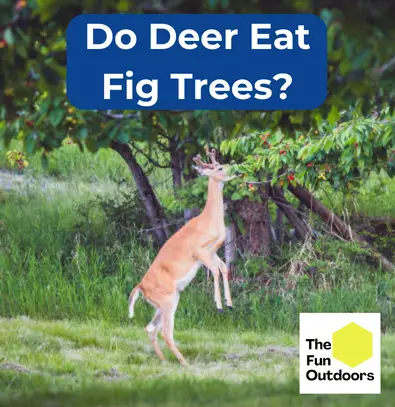Deer are known to be herbivores, consuming mostly leaves, twigs, fruits, and other vegetation. When it comes to fig trees, there seems to be some uncertainty as to whether or not deer eat them. So do deer eat fig trees?
Deer do not usually eat fig trees, but deer do eat fig trees if they are hungry and have no other food choices available. Deer don’t like the taste of figs, and deer cannot digest the tree’s sap..
Key Takeaways
- Deer may eat fig trees if they are hungry and have no other food choices available.
- Figs have little nutrition for deer, and they cannot digest the tree’s sap.
- Gardeners can protect their fig trees from deer damage by understanding deer’s diet and behavior.
Do Deer Eat Fig Trees?
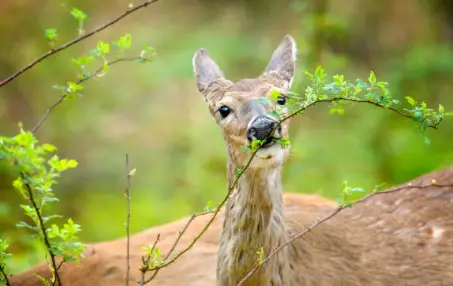
Deer are usually not interested in eating fig trees.
While they may occasionally nibble on the leaves or bark of young fig trees, they tend to avoid fig trees altogether due to the texture and taste of the fruit.
If deer are hungry enough, they may resort to eating ripe figs that have fallen to the ground.
Do Deer Eat Fig Leaves?
Deer may occasionally eat fig leaves, but it is not a common occurrence. In general, deer prefer to eat the fruit and bark of trees rather than the leaves, but will go for young leaves of fig trees because they are particularly tender.
Do Deer Eat Figs?
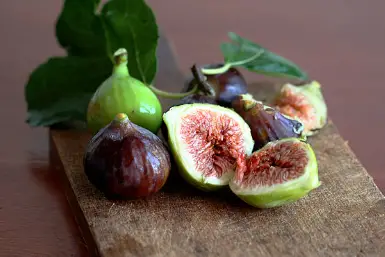
Figs are a delicious fruit that many animals enjoy, but do deer eat figs? The answer is not straightforward, as it depends on various factors such as the availability of other food sources, the ripeness of the fruit, and the taste preferences of the deer in question.
Deer can be considered omnivorous when it comes to flowering plants, as they tend to eat most species of flowering and fruit plants that are available within their reach. However, deer usually don’t eat figs as they don’t like the texture and taste of the fruits. Deer cannot digest the tree’s sap, and the fruits have little nutrition for the animals. Nonetheless, ripe fruits that fall off the tree can be a good snack for a very hungry deer.
It is worth noting that deer are opportunistic feeders, and they will eat figs if they have no other food choices available. In such cases, deer may consume figs even if they do not particularly like the taste or texture of the fruit. Therefore, if you live in an area with a high deer population, it is advisable to protect your fig trees from deer damage.
In conclusion, while deer do not typically eat figs, they may do so if they have no other food choices available. Therefore, it is advisable to protect your fig trees from deer damage, especially if you live in an area with a high deer population.
Are Fig Trees Deer Resistant?
Deer are known to be herbivores that feed on various plants, shrubs, and trees. However, fig trees are not their preferred choice of food. While deer may occasionally nibble on the leaves and fruits of fig trees, they generally avoid them.
One reason why deer avoid fig trees is because of the latex sap that is present in the tree’s leaves and unripe fruits. This sap is known to be bitter and can cause irritation to the deer’s mouth and digestive system. As a result, deer tend to avoid fig trees that have not yet fully ripened.
Another reason why deer avoid fig trees is that they offer little nutritional value. Deer are selective feeders and prefer plants that are high in protein and carbohydrates. Fig trees, on the other hand, have a low protein content and are not as energy-rich as other plants that deer prefer.
Additionally, fig trees have thick and rough leaves that are not easily digestible by deer. The leaves contain high amounts of fiber, which makes them difficult for deer to break down and extract nutrients from. As a result, deer tend to avoid fig leaves and focus on other plants that are easier to digest.
This is not to suggest that fig trees are deer-proof: no plant is 100% safe from a hungry deer!
When Are Deer Most Likely To Eat Fig Trees?
Deer are most likely to eat fig trees during the winter months when food is scarce, and they are hungry. During the winter, deer have to forage for food to survive, and they will eat whatever is available, including fig trees. In addition, young fig trees are more vulnerable to deer damage than mature trees.
Deer will also eat fig trees during the summer when other food sources are scarce. However, they are less likely to do so because there are other plants and fruits available during the summer months.
It is important to note that deer are more likely to eat fig trees if they are hungry and cannot find other food sources. Therefore, it is important to provide alternative food sources for deer in the area to reduce the likelihood of them eating fig trees.
Additionally, deer are more likely to eat fig trees if they are located near a wooded area or in a rural setting where there are few other food sources available. In urban areas, deer are less likely to eat fig trees because there are more food sources available, such as gardens and parks.
Overall, while deer do eat fig trees, it is not their preferred food source, and they are more likely to eat them when other food sources are scarce. It is important to take steps to protect young fig trees from deer damage, such as using fencing or repellents, and to provide alternative food sources for deer in the area.
How To Keep Deer From Eating Fig Trees
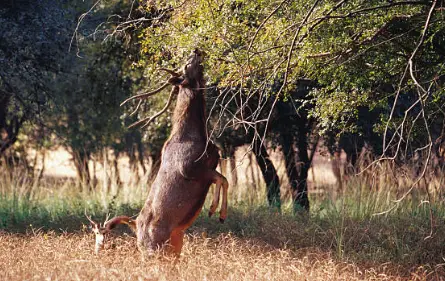
Deer can cause significant damage to olive trees by stripping the bark and branches, which can ultimately lead to the death of the tree. However, there are several ways homeowners can protect olive trees from deer.
Fencing
One of the most effective ways to prevent deer from eating olive trees is to enclose them with a fence. A fence will keep deer out of the area and away from the tree. It is important to choose a fence that is tall enough to prevent deer from jumping over it and sturdy enough to withstand their weight. A fence that is at least 8 feet tall is recommended.
Repellents
Another way to protect olive trees from deer is to use repellents. There are several types of repellents available, including deer repellent sprays, motion-activated sprinklers, and noise deterrents. Repellent sprays can be applied to the base of the tree and will deter deer due to their unpleasant taste and smell. Motion-activated sprinklers and noise deterrents work by scaring deer away from the area. When using repellents, it is important to combine and alternate them for maximum effectiveness.
It is also important to note that some plants are known to be deer-resistant, such as rosemary, marigold, fern, oak, witch hazel, and bittersweet. Planting these types of plants around the olive trees can help deter deer from the area.
Physical Barriers
If individual fences are not practical, an electric fence can be used to protect an entire orchard. The fence should be at least 8 feet tall and have wires spaced 6 inches apart. The wires should be electrified with a charger that delivers a low voltage shock.
In addition to fencing and repellents, other methods can be used to deter deer from the area. These include using human hair, zoo doo, or dog hair as a deterrent, pruning the trees to reduce their size and growth, and using deer-resistant plants around the olive trees.
Overall, preventing deer from eating olive trees requires a combination of physical barriers, repellents, and other deterrents. By taking these steps, olive tree growers can protect their trees from deer damage and ensure a healthy harvest.
Will My Fig Tree Grow Back After Being Eaten By Deer?
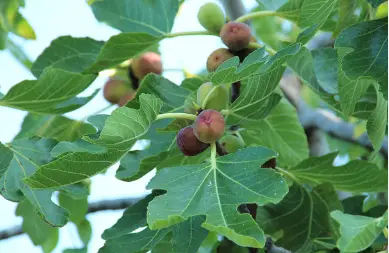
If you have a fig tree and you’ve noticed that deer have been munching on its leaves, you may be wondering if your tree will grow back. The answer is that it depends on the extent of the damage.
Deer tend to eat the young tips of fig trees, which can cause stunted growth and a reduction in fruit production. If the deer have only eaten the tips and stem of your tree, it will likely recover. You can prune the damaged areas to encourage new growth and protect the tree from further damage.
If the deer have eaten a significant portion of your tree, it may take longer to recover. In this case, you should make sure the roots are still firmly in the ground and consider adding a barrier around the tree to prevent further damage.
It’s important to note that even if your fig tree does recover from deer damage, it may take a few years to reach its full potential. However, with proper care and protection, your tree can still thrive and produce delicious figs for years to come.
Understanding Deer’s Diet
Deer are herbivores, and their diet mainly consists of leaves, stems, fruits, and flowers. They are known to be opportunistic feeders, which means they will eat whatever is available in their habitat. However, they have a preference for certain types of food based on their palatability and nutritional value.
Seasonal Variations in Deer’s Diet
Deer’s diet varies depending on the season and availability of food. During the spring and summer, deer tend to eat more herbaceous plants, such as clover, grasses, and forbs. These plants are rich in protein and other nutrients that help deer grow and develop.
In the fall and winter, deer shift their diet to woody plants, such as shrubs, trees, and vines. They also consume acorns, nuts, and other hard mast. These foods are high in carbohydrates and fats, which help deer build up fat reserves for the winter.
It’s worth noting that deer’s preferred food source can vary depending on the region and habitat they live in. For example, deer living in areas with abundant agricultural crops may consume more corn and soybeans than those living in forested areas.
In conclusion, deer are opportunistic feeders that will eat whatever is available in their habitat. Their diet varies depending on the season and availability of food. While they have a preference for certain types of food based on their palatability and nutritional value, their diet can vary depending on the region and habitat they live in.
Other Wildlife and Fig Trees
While deer are known to eat fig trees, other wildlife may also be attracted to these fruit-bearing trees. Squirrels, for example, are known to steal figs from trees and eat them. They may also damage the tree by gnawing on the bark or branches. Raccoons and possums may also be attracted to fig trees, particularly when the fruit is ripe.
To protect your fig tree from these animals, consider using physical barriers such as netting or fencing. You can also try using deterrents such as motion-activated sprinklers or noise-making devices.
It’s important to note that not all wildlife will be attracted to fig trees. Some animals may prefer other types of fruit trees or vegetation. It’s also important to consider the specific wildlife species in your area and their feeding habits.
Overall, while deer may be a concern for fig tree owners, it’s important to be aware of other potential wildlife threats and take appropriate measures to protect your trees.
Do Deer Like Fig Trees? Wrapping Things Up
Deer do not like fig trees unless they are hungry and cannot find any other food. Figs are not a preferred food source for deer, and they tend to avoid them when other options are available. If deer are hungry or there is a shortage of food, they may turn to fig trees as a last resort.
To protect fig trees from deer, various measures can be taken. Fencing is one of the most effective ways to keep deer away from fig trees. A physical barrier can prevent deer from reaching the trees and eating the fruit. Other options include using deer repellents or planting deer-resistant plants around the fig trees.
It is important to note that while deer may not eat fig trees often, they can still cause damage to the trees by rubbing their antlers against the bark or breaking branches. Therefore, it is essential to take steps to protect fig trees from deer, especially during the winter months when food is scarce.
Overall, understanding the feeding habits of deer and taking preventative measures can help ensure the health and longevity of fig trees. With proper care and protection, fig trees can thrive and provide a delicious and nutritious fruit for years to come.

